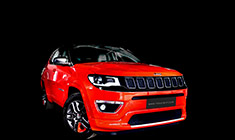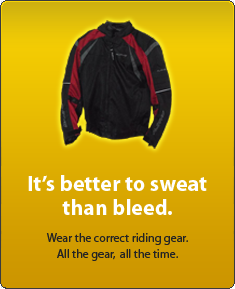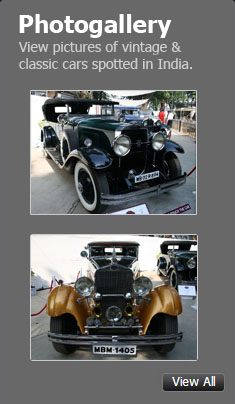News
Driving my Mercedes W123 to Netherlands for a day of sailing in a tug
A trip like this costs Euro 64 (INR 5000). Not cheap, but then again, it is a full-day program.
BHPian Jeroen recently shared this with other enthusiasts.
Those of you who have read some of my posts over the years might recall I started my career a long time ago in the merchant navy. I went to naval college, got a nautical engineering degree and went off to sea. I spent almost 10 years in the merchant navy and offshore industry. I have worked for four different shipping companies, three Dutch and one American. The first years were spent on all kinds of ships, from general cargo, and container to bulk carriers.
But I spent most of my time on oceangoing tugs, Anchor Handling and Supply vessels and a few oil rigs.
I was one of those little boys who from very early on knew what he wanted to be, either a pilot or a naval engineer. Truth be told, my mum used to claim as a toddler I only wanted to become a garbage truck driver. Anyway, with lousy eyesight, becoming a pilot in those days was not an option. So after secondary school, I went to naval college.
When I graduated there was quite a shortage of naval officers. At the diploma ceremony in the main college hall, your name would be called, you would walk forward and you would be handed over your diploma and your engineering license. You would walk back to be congratulated by your family and friends and then you would walk towards the back of the hall. Here representatives of all Dutch shipping companies were present and you would be offered a job on the spot! Those were the days, it also meant promotions were swift. I became Chief Engineer after less than 6 years.
I “came ashore” as it was known in the late eighties. But I am still interested in anything that floats. I like to visit harbours, read up on ships and so on. My best friend Dennis and I met whilst we were working on an anchor-handling tug off the coast of West Africa. Dennis was the first mate and I was the second engineer. We became very best friends. We quit the sea-faring life about the same time, we both got married, both had three kids and all of us moved around the world a lot. Dennis and I would visit harbours and naval events together during all those years.
Times change, Dennis passed away some years ago, but the passion for the sea is still there.
Last Friday I was scrolling through Facebook and an invite popped up from the ocean-going (museum) tug Elbe to join her for a Saturday of sailing. I signed up immediately.
The next morning I started up my 40-year-old Mercedes W123 to drive over to Maassluis, the home base of the Elbe.
I often come to Maassluis. Everybody who is interested in towage and salvage will do so. It has a very nice tugboat museum, and the harbour is home to various museum ships, mostly tugs!
Also, Maassluis used to be home to the legendary Dutch Towage and Salvage Company Smit.
Here is the gorgeous Elbe. She was launched in February 1959, which makes her the same age as me!!
She sailed as Elbe for Smit from 1959 - 1976. She was sold and became a pilot boat in Maryland, USA. Next, she was sold again and she became known as Greenpeace, for eh what else Greenpeace? In 2003 she was bought by the society that still owns her today and who was responsible for her restoration which was completed in 2013.
The next one is the Furie, she is a proper steam tug boat. She was used in the Dutch TV series, Hollands Gloria (Dutch glory), named after the same book by Jan de Hartog. It tells the story of tug boat captain Jan Wandelaar. The Fury is moored at the back of the Tugboat museum and is still fully operational. Just like the Elbe, she does tours all over the Netherlands and sometime even further afield, such as Belgium and Germany.
Another tug is the Varnebank. She is also an ex-Smit tug. She and her sister ships were specifically designed to assist the very large and ultra-large tankers and carriers coming into Rotterdam harbour from the late 70s onward. She was one of the very first harbour tugs fitted with so-called Voight Schneider propulsion.
The harbour also has a couple of smaller vessels, most are ex-Smit. Some of these vessels were used in salvage operations.
Another ex-Smit harbour tug, the Varnebank. It is the most recent acquisition, a nice former harbour tug.
These days with pop stars, famous football players, F1 drivers, DJs and influencers it is difficult to imagine, but there was a time when captains of ocean-going tugs were famous and real heroes! The Dutch have always been famous for their towage and salvage capabilities. Smit was for decades, the number-one towage and salvage company in the world. If there was a difficult job anywhere in the world, you would call their HQ in Maassluis.
Smit tugs were stationed all over the world near known difficult waters. Very often the main marine underwriters would pay Smit to keep a tug at a certain location, just in case.
Back to the Elbe. First I will show you some images from the ship itself and some of the cabins and then we will take you to the sea! Next, you are invited to come along for a visit to the engine room!
Here we are early Saturday morning, still moored in Maassluis. You can see the anchor winch on the foredeck and the ship’s bell.
The Elbe is fully restored, but it was a difficult journey. Believe it or not, she sank twice during her restoration years. Luckily, both times in harbour and she could be lifted easily. But all these tugs still exist because of a small army of very dedicated volunteers and some very generous financial donors and backers. As you can imagine, a lot of them, former merchant navy sailors and current marine-related companies.
There are a few things that are not original anymore and I will point them out subsequently. Here we are on the port wing of the bridge. The captain can manoeuvre the ship with that remote control box. It controls the bow thruster and the rudder. The engine is controlled by the telegraph on the outside of the bridge.
Neither this remote control box nor the bow thruster is original. But it makes manoeuvring this tug in close quarters so much easier. Sometimes these oceangoing tugs needed assistance from local harbour tugs for manoeuvring. With only one propellor, one rudder and no thrusters, manoeuvring is difficult.
Here you see the bridge or wheelhouse. Very prominent on ships like this is a massive steering wheel. You would be hard-pressed to find a steering wheel on any modern vessel. If they have it, it would be the size of a small saucer. The steering wheel console also houses the gyro and the autopilot. Very simple autopilot, just follows a gyro course.
You can also see the engine room telegraph towards the far port area. This telegraph is duplicated on the starboard side, but also on the outside for easy operation.
The laptop obviously is not original. It is hooked up to a GPS and an AIS (Automatic Identification System). This ship, old as she is, still needs to comply with all modern rules and regulations, so she needs AIS.
The sort of periscope about the steering wheel is a device to look at the magnetic compass above the bridge.
Typical for the tugs of this era are the many small portholes on the bridge. These days you will find huge open windows all around the bridge. Facing forward and rearwards. On these old tugs, the rear view was very limited from the bridge. The portholes/windows needed to be so small because the glass they used was simply not that strong. Big waves smashing into it can break it.
Right behind the wheelhouse is the chart room.
Behind the wheelhouse and chart room, the captain’s cabin. The roomiest and nicest of all cabins, obviously. Being a captain on a tug means you need to be available 24/7. It would take just a few steps from his bunk (bed) to the bridge!
By now we had gotten underway. We are sailing eastwards, following the “Nieuwe Waterway” to the Hook of Holland and the North Sea.
The Elbe offers different kinds of trips. Sometimes they will visit a maritime event in the Netherlands or abroad and you can come along. They do a harbour tour, where they sail up the river towards Rotterdam and you will get to see many of the Rotterdam harbours.
Today’s tour would take us out into the Northsea where we would visit one of the anchor locations just west of Scheveningen. Scheveningen is a renewed Dutch beach town, adjacent to The Hague. A trip like this costs Euro 64 (INR 5000). Not cheap, but then again, it is a full-day program!
The old towing winch room has been converted into a little cafe/bar/restaurant. You can get coffee/tea/all kinds of drinks and something to eat.
It is a shame the towing winch has been removed. It is one of the interesting features of tugs. They did have a little model of it on display.
Those who have followed my posts over the years will have seen us cross the English Channel multiple times. Usually via the Hook of Holland Harwich Stena ferry. First time I got to see the Stena terminal and ferries from another vessel.
I have made the crossing to and from Harwich on this ferry (Stena Britanica) dozens and dozens of times and on her sister ship. An old mate of mine from naval college is the local Stena Chief. A few years ago he arranged for me to have a tour of the Stena Britanica. I was shown around by the Chief Engineer around the engine room and bridge. Very interesting.
As you will see from the images and video, it was absolutely gorgeous day. About 14-15 deg-C, but a strong SWS wind, about force 4-5. Which meant the sea was going to be choppy.
Most people spend all their time on deck. Being out in the open is a good way to keep any seasickness away. I will be honest, I do suffer from seasickness as well. Not badly, but still. So just to be on the safe side I took a couple of anti-sea sickness tablets. Because here is the thing, once you become seasick, your day is ruined. You will be awful until you are back on terra firma.
Once we cleared the Hook of Holland breakwaters, the Elbe turned north and followed the Dutch coastline. We stayed about 2-3 miles from shore. Here we are in front of Scheveningen. You can just about make out the huge Ferris wheel on the pier of Scheveningen.
A couple of the ships at anchor.
Some more wheelhouse features. This is right above the inside Steering Wheel. Because these tugs had such poor rearwards visibility from the wheel house there are several Steering Wheels mounted on different decks outside. You also see the main magnetic compass in front of the Steering Wheel.
Can you imagine being out here in the middle of a dark and stormy night on an ocean trying to get a towline across to another vessel whilst manoeuvring in 8-12 meter waves?
Tugs always carry a huge array of antennas, radars and so on. Of course, the Elbe still has all the original antennas and a few more modern ones as well. E.g. GPS, AIS, Satcom.
Which brings us to the radio room. On any ship, an important place, manned by the Radio officer or Sparks as we used to call them. In those days there was no satellite communication, no Internet. So communication was all done on relative low radio waves and with morse code.
A good Sparks on a tug was absolutely critical. It is a real skill to be able to listen to radio signals in morse on these radio bands and be able to pick up a distress signal!! That is usually how these tugs were called. In those days there was simply nothing else. Sparks spend 24/7 in their radio room. Whilst on the station, they used to work, sleep eat and drink there. They left the receiver on when they went to sleep. They were so well trained that they would pick up an SOS morse code in their sleep and wake up!
As soon as the Spark raced to the captain the whole ship companion got excited. Because if you are a real tug man/woman there is nothing more exciting than going out on a salvage job!! Dutch tugs stationed around the world had a special status code that they would radio signal to their head office to let them know they were ready for the next job. PERK which stands for Paraat en start klaver. Standby and ready to go!! PERK was easier in morse of course.
Here you see two morse keys!
By now we were on our way back home to Maassluis again. Absolutely fantastic day. I met and spoke to many of the volunteers. We had some stories to share, found a guy who sailed on one of the same vessels as I had. The very large/thick sort of white rope is called a “stretcher”. It is an essential part of a towing connection. A towing connection is made up of steel wire and sometimes bit of chain as well. The stretcher will be attached somewhere in the middle. It allows for some “stretching” of the towing connection. It needs to sit in the middle as it will be underwater. The continuous stretching back and forth will generate heat, but being in the seawater allows it to stay cool and it will last longer.
A little impression of the Elbe at sea near the Scheveningen anchor location. The north sea is an extremely busy waterway. There are strict rules and designated channels ships must follow. Also, you can only anchor as these designated spots. Ships tend to anchor out here as they might have to wait for their berth to be readied.
The complete ship is open to all passengers. You can go anywhere, with the exception of the crew cabins down below. But anywhere else you can go at your leisure, including what for me was the main attraction the engine room!!
Continue reading about Jeroen's experience for BHPian comments, insights and more information.

















